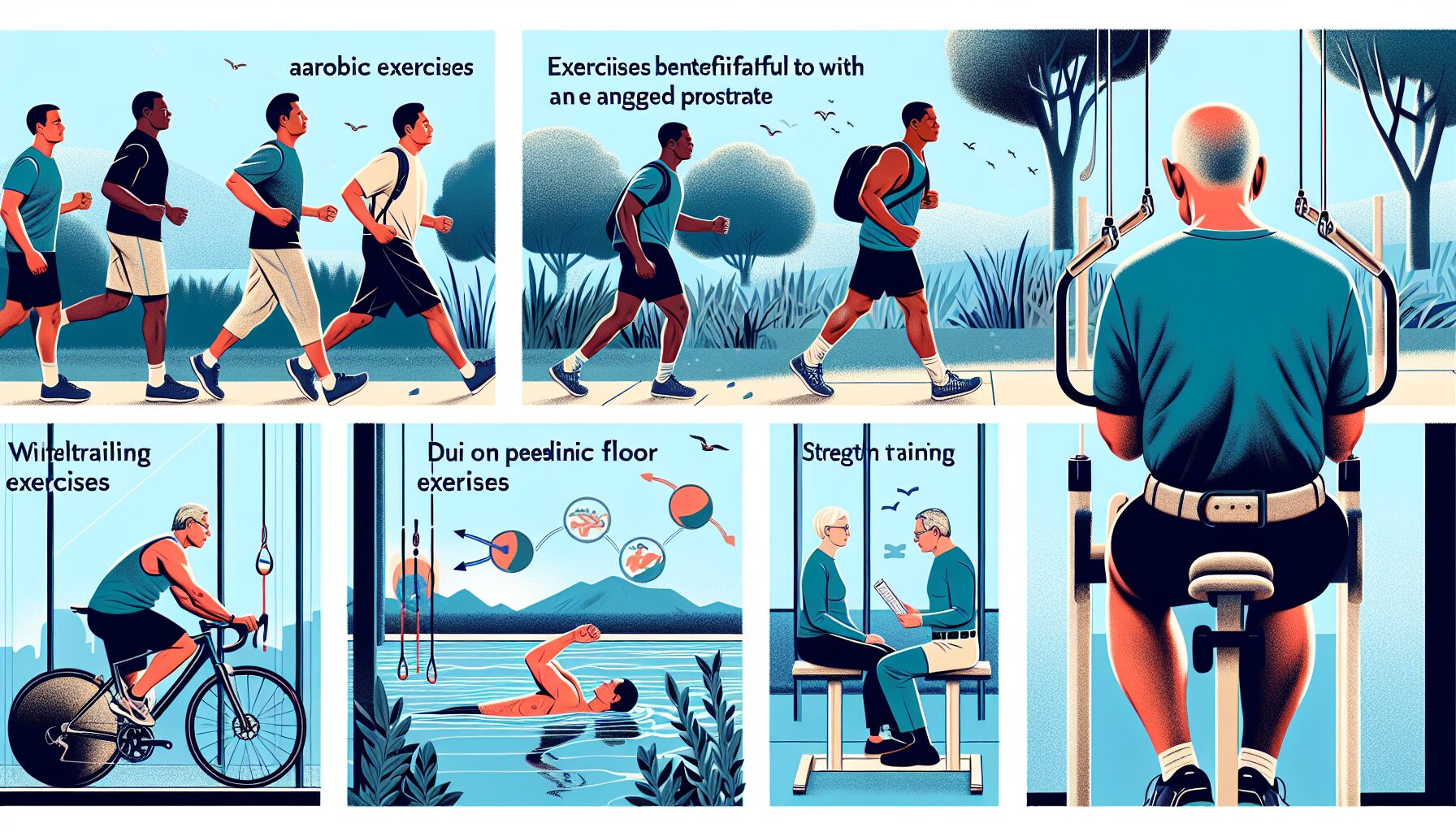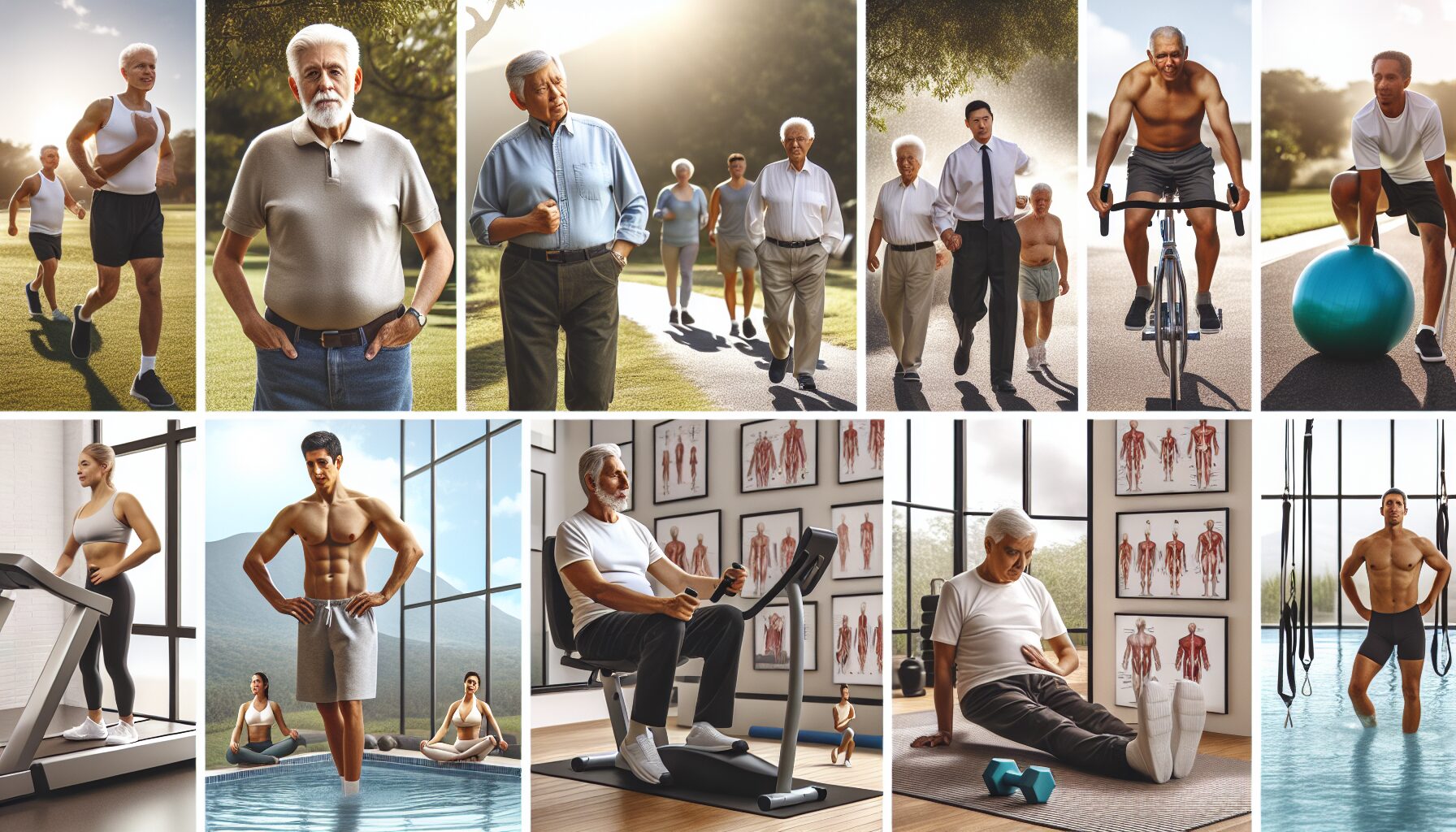The Best Exercise for an Enlarged Prostate: A Comprehensive Guide
An enlarged prostate also known as benign prostatic hyperplasia (BPH), is a common condition affecting men as they age. The prostate gland, which is responsible for producing seminal fluid, can enlarge and cause urinary symptoms such as difficulty in starting urination, a weak urine stream, frequent urination, and the feeling of incomplete bladder emptying. While medical treatments are available, incorporating exercise into your routine can significantly improve symptoms and overall prostate health. But what is the best exercise for an enlarged prostate? This article delves into the most effective exercises to manage and alleviate the symptoms of BPH.

# Understanding the Role of Exercise in Prostate Health
Before we dive into specific exercises, it’s essential to understand how physical activity benefits the prostate. Regular exercise improves cardiovascular health, reduces inflammation, helps maintain a healthy weight, and boosts immune function—all factors that contribute to better prostate health. Additionally, exercise can help reduce stress levels, which is crucial since stress can exacerbate BPH symptoms.
# Aerobic Exercise: Boosting Overall Health
Aerobic exercises are activities that get your heart rate up and increase blood circulation throughout your body. These types of exercises are particularly beneficial for managing BPH symptoms because they help improve cardiovascular health and aid in weight management. Being overweight can worsen BPH symptoms due to increased pressure on the bladder and prostate.
Walking: One of the simplest yet most effective aerobic exercises is walking. Aim for at least 30 minutes of brisk walking five days a week. Walking helps improve blood flow to the pelvic region and can alleviate some urinary symptoms associated with an enlarged prostate.
Swimming: Swimming is a low-impact aerobic exercise that provides a full-body workout without putting stress on your joints. It helps improve cardiovascular health and overall fitness, which can positively affect prostate health.
Cycling: While traditional cycling can sometimes put pressure on the perineal area (the region between the anus and scrotum), using a recumbent bike or adjusting your bike seat can mitigate this issue. Cycling enhances cardiovascular fitness and helps maintain a healthy weight, both of which are beneficial for managing BPH.
# Strength Training: Building Muscle and Reducing Symptoms
Strength training exercises involve using resistance to build muscle mass and strength. Incorporating strength training into your routine can help manage BPH symptoms by improving overall muscle tone and reducing fat tissue around the pelvic area.
Weight Lifting: Engaging in moderate weight lifting exercises two to three times a week can help build muscle mass and improve overall strength. Focus on compound movements like squats, deadlifts, bench presses, and rows that work multiple muscle groups simultaneously.
Resistance Bands: If you prefer a less intense form of strength training, resistance bands are an excellent option. They provide resistance without heavy weights and are suitable for various fitness levels. Exercises like banded squats, chest presses, and seated rows can effectively target different muscle groups.
# Pelvic Floor Exercises: Targeting Prostate-Specific Muscles

Pelvic floor exercises, commonly known as Kegel exercises, specifically target the muscles of the pelvic floor that support the bladder and prostate. Strengthening these muscles can help reduce urinary symptoms associated with BPH by improving bladder control.
Kegel Exercises: To perform Kegel exercises, first identify your pelvic floor muscles by stopping urination midstream or tightening the muscles that prevent passing gas. Once you’ve identified these muscles, contract them for five seconds, then relax for five seconds. Aim to do 10-15 repetitions three times a day. Over time, gradually increase the duration of each contraction and relaxation period.
Bridge Exercise: The bridge exercise also engages pelvic floor muscles while strengthening the glutes and lower back. Lie on your back with your knees bent and feet flat on the floor. Lift your hips towards the ceiling while squeezing your glutes and engaging your pelvic floor muscles. Hold for a few seconds before lowering back down. Perform 10-15 repetitions for three sets.
# Yoga: Enhancing Flexibility and Reducing Stress
Yoga combines physical postures with breathing techniques and meditation to promote overall well-being. Practicing yoga can help reduce stress levels, improve flexibility, and enhance circulation—all of which are beneficial for managing BPH symptoms.
Cat-Cow Stretch: This gentle yoga pose helps improve spinal flexibility while engaging the pelvic floor muscles. Begin on your hands and knees in a tabletop position. Inhale as you arch your back (cow pose) and exhale as you round your spine (cat pose). Repeat this sequence for several breaths.
Cobra Pose: The cobra pose strengthens the lower back while stretching the abdominal muscles. Lie face down with your palms placed under your shoulders. Press into your palms as you lift your chest off the ground while keeping your pelvis grounded. Hold for a few breaths before lowering back down.
Child’s Pose: Child’s pose is a restorative yoga posture that helps relieve stress and tension in the lower back and pelvic region. Begin on your hands and knees in a tabletop position, then sit back onto your heels while reaching your arms forward on the mat. Rest in this position for several breaths.
# Lifestyle Modifications: Complementing Exercise with Healthy Habits
In addition to regular exercise, making certain lifestyle modifications can further enhance prostate health:
– Stay Hydrated: Drink plenty of water throughout the day to stay hydrated but avoid excessive fluid intake close to bedtime to reduce nighttime urination.
– Limit Caffeine and Alcohol: Both caffeine and alcohol can irritate the bladder and worsen urinary symptoms.
– Eat a Balanced Diet: Incorporate foods rich in antioxidants, vitamins, minerals, and healthy fats to support overall prostate health.
– Avoid Smoking: Smoking can increase inflammation in the body and worsen BPH symptoms.
– Manage Stress: Practice stress-reducing techniques such as mindfulness meditation or deep breathing exercises to keep stress levels in check.
# Conclusion
While an enlarged prostate can be challenging to manage, incorporating regular exercise into your routine can significantly alleviate symptoms and improve overall prostate health. Aerobic exercises like walking, swimming, and cycling boost cardiovascular fitness; strength training builds muscle mass; pelvic floor exercises target prostate-specific muscles; yoga enhances flexibility; and lifestyle modifications complement these efforts.
By adopting a holistic approach that includes physical activity along with healthy habits, you can take proactive steps towards better managing BPH symptoms naturally while promoting long-term well-being. Always consult with your healthcare provider before starting any new exercise regimen or making significant lifestyle changes—especially if you have underlying medical conditions or concerns related to an enlarged prostate.
